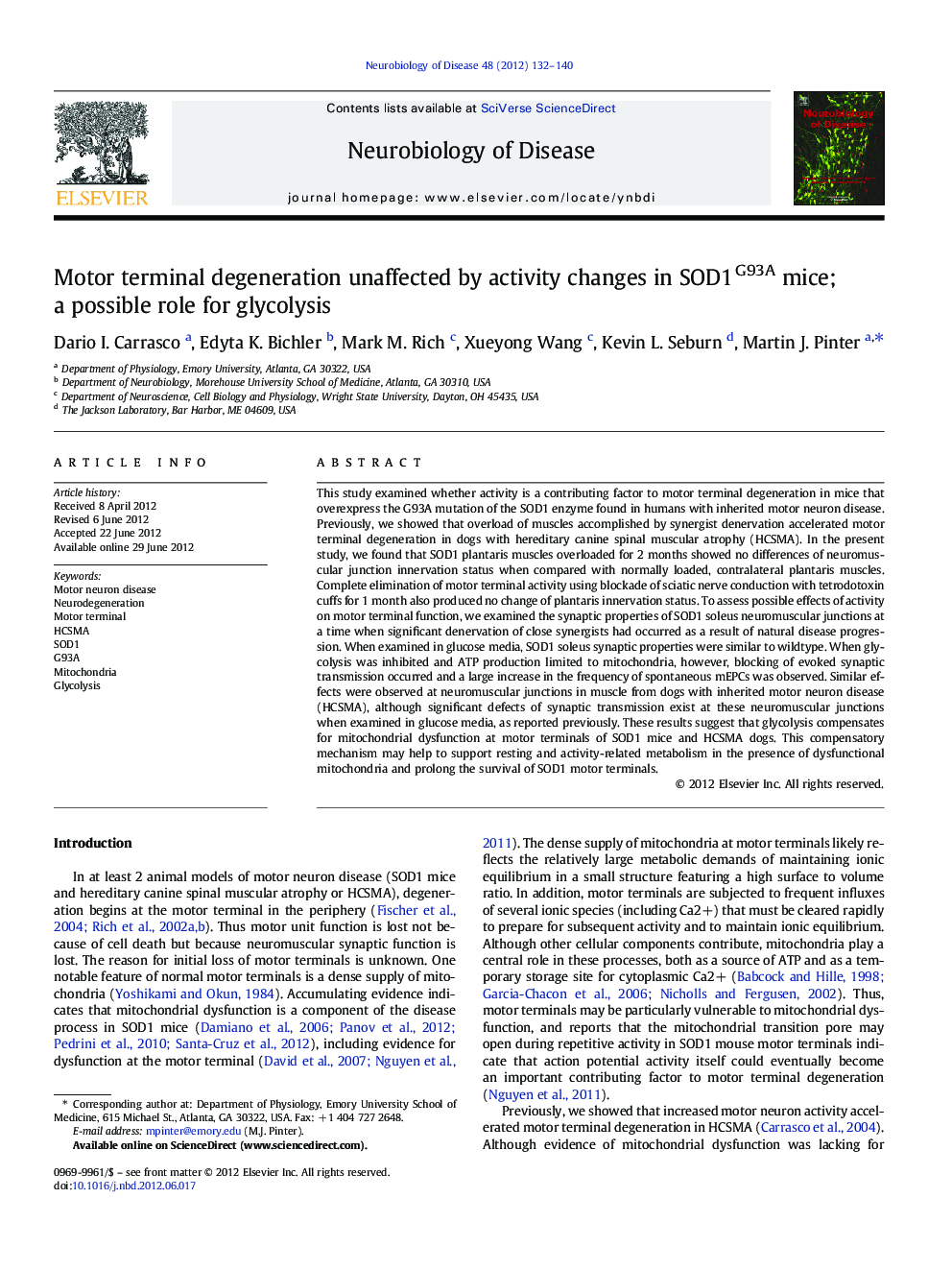| Article ID | Journal | Published Year | Pages | File Type |
|---|---|---|---|---|
| 6022649 | Neurobiology of Disease | 2012 | 9 Pages |
This study examined whether activity is a contributing factor to motor terminal degeneration in mice that overexpress the G93A mutation of the SOD1 enzyme found in humans with inherited motor neuron disease. Previously, we showed that overload of muscles accomplished by synergist denervation accelerated motor terminal degeneration in dogs with hereditary canine spinal muscular atrophy (HCSMA). In the present study, we found that SOD1 plantaris muscles overloaded for 2Â months showed no differences of neuromuscular junction innervation status when compared with normally loaded, contralateral plantaris muscles. Complete elimination of motor terminal activity using blockade of sciatic nerve conduction with tetrodotoxin cuffs for 1Â month also produced no change of plantaris innervation status. To assess possible effects of activity on motor terminal function, we examined the synaptic properties of SOD1 soleus neuromuscular junctions at a time when significant denervation of close synergists had occurred as a result of natural disease progression. When examined in glucose media, SOD1 soleus synaptic properties were similar to wildtype. When glycolysis was inhibited and ATP production limited to mitochondria, however, blocking of evoked synaptic transmission occurred and a large increase in the frequency of spontaneous mEPCs was observed. Similar effects were observed at neuromuscular junctions in muscle from dogs with inherited motor neuron disease (HCSMA), although significant defects of synaptic transmission exist at these neuromuscular junctions when examined in glucose media, as reported previously. These results suggest that glycolysis compensates for mitochondrial dysfunction at motor terminals of SOD1 mice and HCSMA dogs. This compensatory mechanism may help to support resting and activity-related metabolism in the presence of dysfunctional mitochondria and prolong the survival of SOD1 motor terminals.
⺠We tested whether activity contributes to motor terminal degeneration in SOD1 mice. ⺠Neither overload nor paralysis affected the rate or amount of motor terminal degeneration in SOD1 mice. ⺠Motor terminal synaptic properties were similar to wildtype when tested in glucose. ⺠When glycolysis was inhibited, motor terminals showed evidence of mitochondrial dysfunction. ⺠Glycolysis may compensate temporarily for mitochondrial dysfunction in motor terminals.
